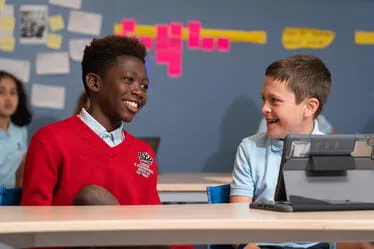I am sure we have all heard schools say, we ‘Personalise’ learning, but what does this really mean, and do all schools mean the same thing when they use the phrase? The short answer, of course, is no.

I am sure we have all heard schools say, we ‘Personalise’ learning, but what does this really mean, and do all schools mean the same thing when they use the phrase? The short answer, of course, is no.

I am sure we have all heard schools say, we ‘Personalise’ learning, but what does this really mean, and do all schools mean the same thing when they use the phrase? The short answer, of course, is no.
Many schools may use the term, but how many actually do it? So let’s be clear, Personalised learning does not mean a student can choose History instead of Geography, or Art instead of Drama. Equally, it does not mean that a teacher has two different worksheets for students to use, depending on the perceived ‘ability’ of a student.
For us, at the British International School of Houston, we like to think of three different approaches; Differentiated, Individualised and Personalised. The chart below, based on the work of Barbara Bray and Kathleen McClaskey, provides a good visualisation of these different approaches.
Personalised | Differentiated | Individualised |
Starts with the learner | Starts with groups of learners | Starts with the needs of the individual learner |
Connects with interests, passions, and aspirations | Adjusts to learning needs of groups of learners | Accommodates learning needs of the individual |
Learners actively participate in the design of their learning | Explicit instruction based upon the learning needs of groups of learners | Explicit instruction based upon the learning needs of an individual learner |
Learners have a voice and choice on what they learn | Teachers create or adapt instruction based on different needs of learners | Teachers customise lessons and tasks for learners based on individual needs |
Different objectives for each learner | Same objectives for groups of learners | Same objectives for learners with specific objectives for individuals who receive one-on-one support |
Learner selects appropriate technology and resources to support their learning | Technology and resources are selected to support the learning needs of groups of learner | Technology and resources are selected to support the learning needs of an individual learner |
Learners build a network of peers, teachers, and others to guide and support their learning | Learners are reliant on the guidance of teachers to support their learning | Learners are dependent on individual teachers or para-professionals to support their learning |
Assessment AS learning | Assessment FOR learning | Assessment OF learning |
Teachers develop capacity to create independent learners who set goals, monitor progress, and reflect on learning | Assessment involves time- based testing and teachers provide feedback to advance learning | Summative assessment is grade-based and involves time-based testing which confirms what learners know and don’t know |
In Individualised and Differentiated, the teacher is in control of the learning. The assumption is that the teacher has something (often knowledge) and they need to impart it to the student. The role of the teacher is an Instructor and this is often referred to as Instructivist education.
In the Personalised model, the assumption is that the learner already has what they need, or they are capable of discovering it for themselves. The role of the teacher here is to help the student make new meaning, or to co-construct learning with the student. This is often referred to as Constructivist learning.
Every time you tell a child something you deprive them of the joy of discovering it for themselves.
- John Dewey
Great teachers understand that there is a time and place for each of these approaches, but that the most powerful learning comes when it is truly Personalised.
For more information on our Definition of Learning, please take a look at our Strategic Plan below.
Andrew Derry
October 2016